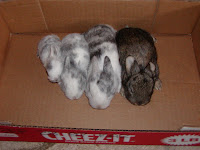Since the beginning of May 2007 here are the lawn mowing tallies I've performed through the end of June - just two month. This includes both my lawn and my dad's lawn.
- My Lawn = 11 times to date and counting...
- My Dad's = 7 times to date and counting...
"I love visiting with Grandma and Grandpa, and writing letters to parents, and pushing lawn mowing machine so Grandpa’s hyena don’t get disturbed."










































